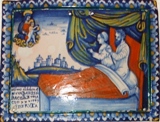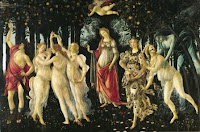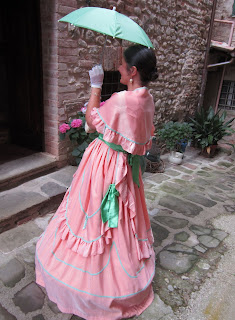The Umbria region has got two main towns, Perugia and Terni.

A Valentine All Year Long.
We will write about Terni in February, celebrating Saint Valentine originally from this town. Saint Valentine is going to be among our future appointments in 2011.
Happy New Year!
Deruta is under the district of Perugia.
 |
| Wheat is life! Excellent flour and bread in Umbria. |
In 1540 Perugia was fighting the Pope on the occasion of the salt war, which originated from the fact that Perugia did not accept another tax on the salt, under the Pope's monopoly, Pope Paul III of the Farnese Family at that time.
Perugia lost the war and the city was finally submitted to the Pope's domains. As a result, starting at that time, the territory of Perugia boycotted the salt tax. This is why local bread in Deruta and in our region is traditionally salt-free.

In the ceramics art museum of Deruta, you may admire beautiful Renaissance salt dispensers. Salt was something that wealthy families only could afford.
In the Renaissance, the Deruta ceramics art reached the highest excellence inspired by artists such as Perugino, Pintoricchio, Raffaello, Michelangelo, the best artists who worked for the Popes.
************************************************************************
 |
| Saint Valentine |
A Valentine All Year Long.
We will write about Terni in February, celebrating Saint Valentine originally from this town. Saint Valentine is going to be among our future appointments in 2011.
Happy New Year!
- Original Post by Roberta Niccacci -
follow my blog and like my Facebook page: www.facebook.com/friendsofcama
email: friendsofcama@gmail.com
email: friendsofcama@gmail.com































